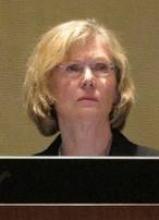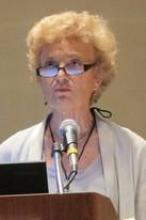MINNEAPOLIS – Improved access to health care appears to be contributing to a rise in attention-deficit/hyperactivity disorder diagnoses among poor children, a national study has found.
Although many factors may be contributing to the rise in ADHD diagnoses among poor children, access to health care through public insurance programs may have played a role, according to Patricia Pastor, Ph.D., who was one of the study coauthors. Since 1997, there has been a significant decline in the number of uninsured poor children because of the expansion of the Children’s Health Insurance Program (CHIP) and Medicaid.
Between 1999 and 2010, the percentage of poor children diagnosed with ADHD increased from 8% to 12%. At the same time, public insurance coverage among these children increased significantly from 40% to 69%, noted Dr. Pastor, of the National Center for Health Statistics, Centers for Disease Control and Prevention. The percentage of poor children covered by public insurance and diagnosed with ADHD also increased from 10% to 14%, but this did not reach statistical significance.
The analysis included 35,896 children, aged 7-11 years, who part of the National Health Interview Survey, an ongoing, nationally representative, in-person household survey. Diagnosed ADHD was identified by the following question: "Has a doctor or health professional ever told you that your child had attention deficit hyperactivity disorder or attention deficit disorder?" Poverty status was based on reported and imputed family income and size. "Poor" children had family incomes less than 200% of the poverty level, while those classified as "non-poor" had family incomes 200% or more of the poverty level.
Between 1999 and 2010, there was an upward trend in the percentage of all children diagnosed with ADHD, increasing by 2% annually, reported Dr. Pastor and her coauthor Cynthia A. Reuben, M.A., also with the CDC. The percentage of non-poor children diagnosed with ADHD remained flat at about 7% during this time period, varying by just 0.2% annually. This compares with an annual percent change (APC) of 2.9% among poor children.
Over the same time period, the percentage of poor children with private health insurance coverage dropped significantly from 35% to 20%, Dr. Pastor said. This was offset by the rise in children on public insurance, lowering the overall number of poor children without insurance from 22% to 12% between 1999 and 2010.
Logistic regression analysis – adjusted for such confounders as age, sex, race, and ethnicity – revealed a significant increase over time in diagnosed ADHD among poor children, but not among non-poor children. When the model was further adjusted to include insurance coverage, the increased risk of an ADHD diagnosis among poor children declined to 1.0, but was not totally eliminated.
"So clearly there were other factors associated with this significant upward trend of diagnosed ADHD in poor children," said Dr. Pastor. Future analyses will explore these factors, such as changes in diagnostic practices of health care providers and in special education programs.
A meeting attendee expressed surprise that the increase in ADHD diagnoses was seen only in the public sector, and asked whether a similar rise was not seen among families with private insurance because they still face costly copayments for tests to diagnosis ADHD.
Dr. Pastor said the diagnosis of ADHD was based on parental report and that a different data set would be needed to tease out the influence of copayments on ADHD trends. "We don’t know what parents had to do to get those diagnoses, and I think that is one of the limitations of our data source," she said.
Session moderator Dr. Fiona Stanley, a professor of pediatrics at the University of Western Australia in Perth, said in an interview that she believes the increase in diagnosed ADHD among the poor does not represent a real increase in the incidence of the disorder, but rather that "more families are coming forward because they can."
She said the study is extremely important because the "usual pattern that we see for ADHD and autism is that poor people aren’t in the sample," and that they are also unlikely to be diagnosed with ADHD or autism, even in countries with national insurance like Australia.
Once the diagnosis is made, clinicians need to provide a lot of parental support and education to poor families on how to manage these children, Dr. Stanley advised.
"Many drugs now, particularly psychotropic drugs, are being given off label with no evidence of what they’re doing in children in primary school up to the teenage years when brains are still developing," she said. "I don’t think we have very good trial evidence of whether they’re effective, and the overdiagnosis of mental illness, particularly in the DSM-V, is horrendous."



